1961 Ferrari 250 GT SWB 'Breadvan'
A car built out of revenge, the infamous Breadvan attempted to beat Ferrari’s 250 GTO at its own game. We recount a back story that’s every bit as extraordinary as its design.
Story by Richard Heseltine
Images by Michael Ward
BAKE OFF FERRARI 250 GT BREADVAN
Turning up the heat on a racing legend
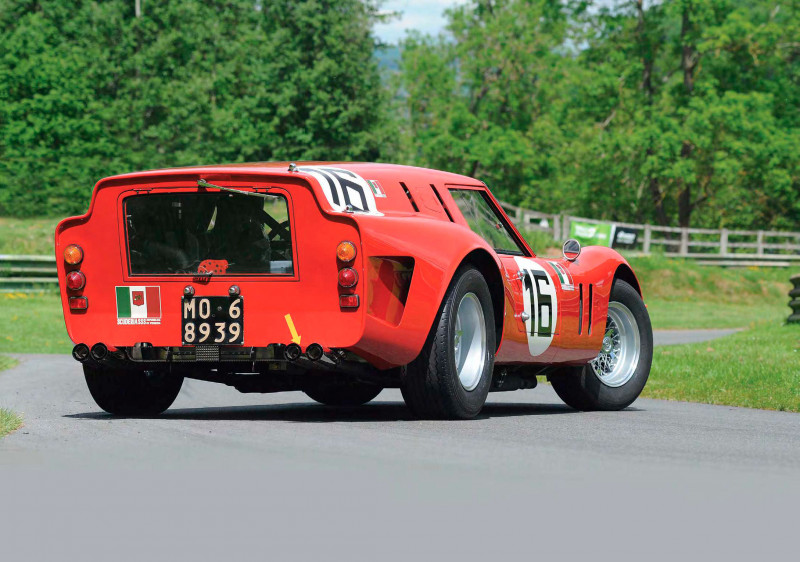
Vengeance is mine, and I will repay. Whether or not Count Volpi di Misurata was familiar with the Old Testament remains unrecorded. What is clear, however, is that he agreed with the sentiment. The young nobleman was dumfounded and incensed by Enzo Ferrari’s less than subtle snub following the famous ‘Palace Coup’ walkout in 1961, after Il Commendatore dubbed this loyal customer a ‘traitor’. After all, the Count was helping bankroll the ex-Ferrari ‘dissidents’ to form a rival operation, ATS. He had picked a side and that was all there was to it. The Count’s order for a brace of 250 GTOs was cancelled. He had been ostracised.
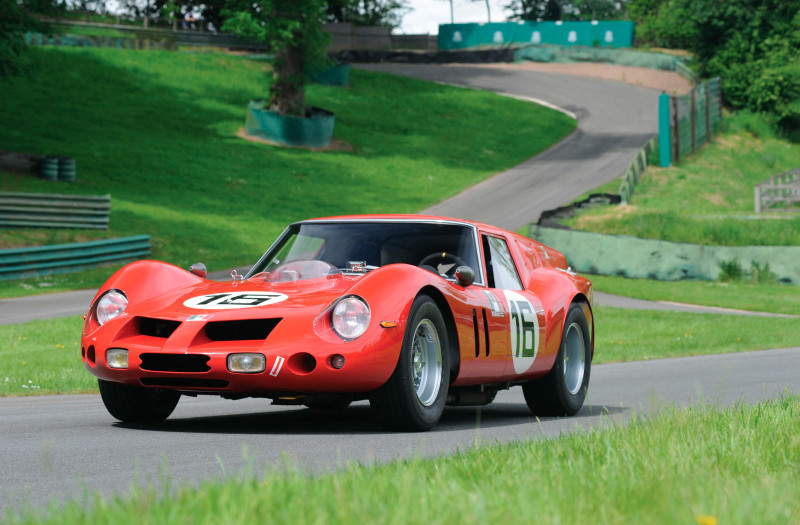

However, the Count was not one to take such a rebuke laying down. He would take the fight to The Old Man. Stung by such a public (and well-publicised) rebuke, the 20-something Count vowed revenge and bankrolled the creation of a GTO-beater. He would take a 250 GT SWB and generate a racer that was better than the car conceived to replace it. What’s more, it would be designed by the man who had mapped out the GTO in the first place: Giotto Bizzarrini. The result was the ‘Breadvan’, a car that would in time become one of the most famous – infamous – circuit weapons ever to turn a wheel in anger.
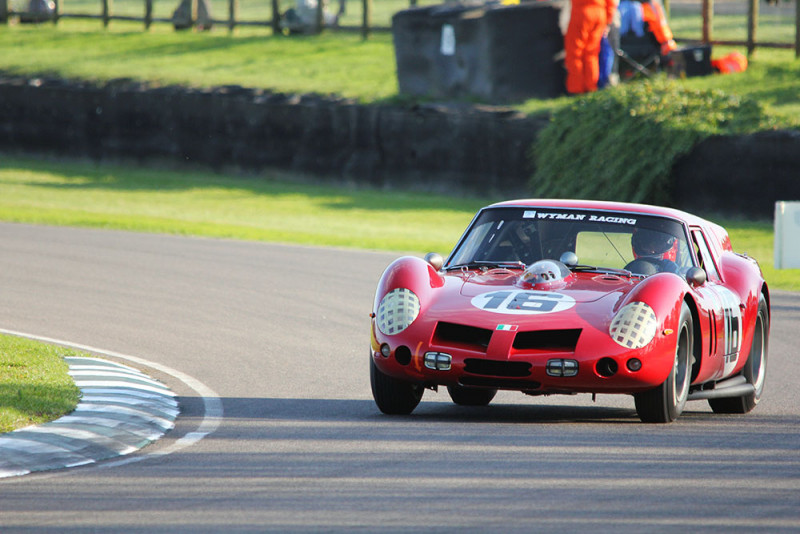
Strip back the legend, however, and not all is as it appears. The Count did get his GTOs, albeit via intermediaries. The Count did commission Bizzarrini to fashion his super-Ferrari, but the mercurial ingegnere had long since departed by the time it finally ventured trackside. The Count did take the fight to the works cars with the Breadvan, but at one point it appeared destined to remain unfinished because he reputedly lost interest in the scheme. What’s more, it wasn’t viewed as a serious threat when it first appeared, a point that wasn’t lost on the media which was initially scornful of the newcomer.
“ The signature feature was its almost horizontal roof and cropped Kamm tail. It was quickly labelled the ‘Breadvan’ ”
It is also worth remembering that the Breadvan’s frontline career was a brief one. However, there is so much more to the narrative than just race results. The Breadvan is remembered precisely because of its back story, even if it has been embroidered over time.
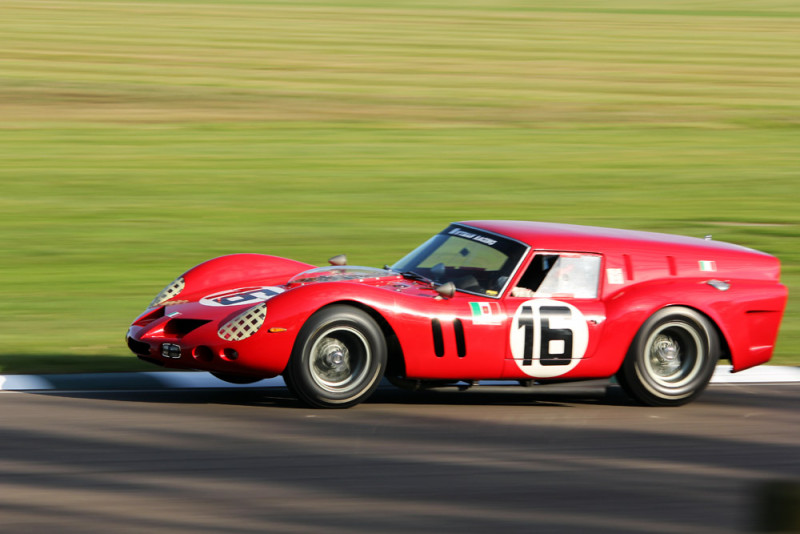
Perhaps even because it has. You cannot help but be swayed by the story behind its creation; a handsome nobleman plotting what equated to a single-digit retort to Enzo Ferrari; moneyed gadflies using the car for high-speed, roadgoing jaunts; brushes with the law; the car being (allegedly) traded-in against an American station wagon when it was practically worthless; and the car’s rebirth in historic racing.
It is a story where it is all too difficult to differentiate the actual from the apocryphal. What is beyond doubt is that the Breadvan’s design – for want of a better word – was mapped out by Bizzarrini. The engineer recalled to Marc Sonnery: “I never designed a body, I only gave guidelines to the carrozzieri [the artisans who constructed bodyshells]… The windscreen, if I recall correctly, was that of the SWB on which all these modifications were carried out similarly to the GTO prototype built by me at Ferrari.”
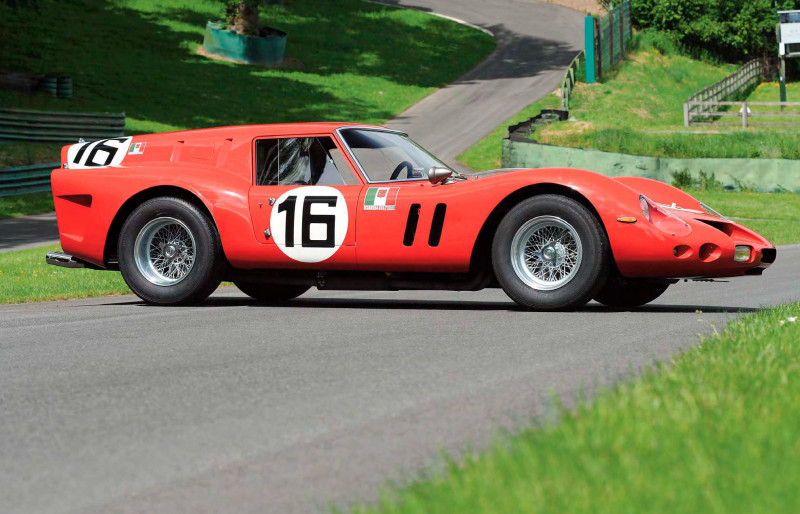
Bizzarrini reworked an ex-Ecurie Francorchamps 250 GT SWB (chassis 2819GT), calling for the engine and radiator to be sited further back in the chassis. A drysump oil lubrication system was also adopted (as per the 250 GTO), the shallower sump ensuring the engine could now sit lower in the chassis, thus lowering the centre of gravity. Atop the engine, a sextet of twinchoke 38 DCN Weber carburettors replaced the original triple twin-choke set-up, again in line with 250 GTO practice. However, the existing four-speed gearbox was carried over for the simple reason that there was no point petitioning Ferrari to supply the latest 250 GTO five-speed transmission.
Contrary to popular belief, and Bizzarrini’s recollections, Piero Drogo’s Carrozzeria Sports Cars concern was not responsible for fashioning the Breadvan’s body. However, there is anecdotal evidence to suggest that some of his staff may have moonlighted on the project. The car was fashioned barely 900 metres away at the Neri & Bonacini facility at Modena. Bizzarrini provided his thoughts and offered guidance, but he left it to the men on the ground to fill in the blanks. Bizzarrini wasn’t around to see the car being realised, either, since in the spring of 1962, he was engaged by Renzo Rivolta.
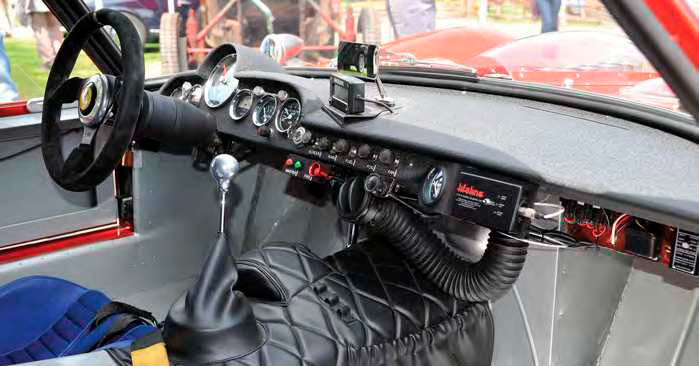
So much has been written about why the Breadvan came into being, but insiders insist that progress was initiallyof the stop-start variety; that their paymaster didn’t appreciate the urgency until it was pointed out that its proposed debut – the 1962 24 Hours of Le Mans – would pass them by unless there was a fresh injection of funding – and interest – from the Count. Progress was kickstarted with less than a month to go before its proposed maiden appearance. According to Umberto Marchesi, who performed the chassis surgery: “If I recall correctly, it was 20 calendar days; 22 at the very most.”
With a low nose and bonnet line, the car’s signature feature was its almost horizontal roof, which terminated abruptly with a cropped Kamm tail. The British media were quick to label it the ‘Breadvan’. Given Bizzarrini’s involvement, it came as no surprise that the outline incorporated some 250 GTO features; functional touches such as shrouded headlights, brake cooling duct intakes outboard of the rectangular driving lights, and the shape of the engine bay exhaust air outlets sunk into the front wings. There was even a nod to the 250 Testa Rossa, with the bank of carburettor inlet trumpets visible beneath a Plexiglas cover on the bonnet.
The car also purportedly emerged 65kg (143lb) lighter than a 250 GTO, and was also more aerodynamic. However, its drag coefficient was never recorded so this remains a moot point. It should be noted that when the car first appeared, the section of nose between the driving lights was plain, curved metal. However, a shallow oval slot was soon incorporated in a bid to improve airflow to the radiator for prolonged high-speed running in high ambient temperatures. It also gained a pair of air extractor slots on the sail panels, presumably to aid cabin ventilation and prevent the build-up of air pressure, which could conceivably have popped the rear screen out.
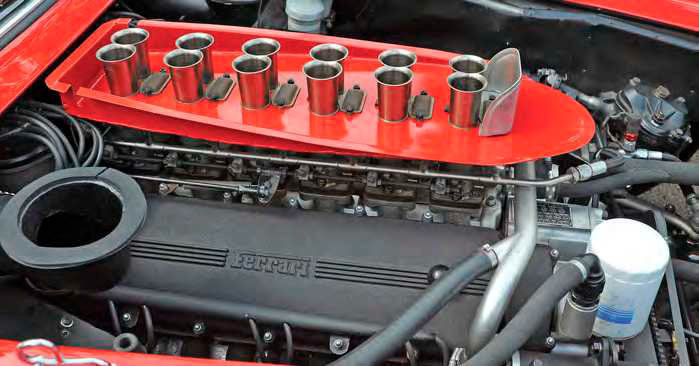
There was little time in which to test the car following its Frankensteinian makeover. 2819GT was shaken down at Modena Autodrome and then it was all systems go for its debut race. Count Volpi’s Serenissima equipe appeared at the Circuit de la Sarthe in force in June 1962. Its proven 250 TRI/61 was to be driven by Joachim Bonnier and Dan Gurney, and the ‘Breadvan’ by team regulars Carlo Maria Abate and Colin Davis. A newly-acquired 250 GTO was driven by Nino Vaccarella and Giorgio Scarlatti, which rather puts paid to the argument that the Count was unable to acquire GTOs, even if he did buy this car and one other via a third party.
Just as night follows day, the Breadvan ran into the thicket of officialdom. The organisers bumped the car into one of the prototype classes rather than the big displacement GT category where it would have been competing against the GTOs. They also insisted a windscreen wiper was fitted to the rear window (one was appropriated from a Fiat Topolino…). They further demanded that it was repainted. The Breadvan made the cut but failed to go the distance due to prop failure. The Count has opined in print that the car failed because the Breadvan was nobbled by the works team. The Breadvan next appeared in the Guards Trophy race where the Scuderia SSS Republica di Venezia entry was the only closed car to finish in the top 10, Abate splashing home in third place. Thereafter, it appeared randomly at the Ollon-Villars hillclimb, and in October 1962 was fielded in the Paris 1000km at the Autodrome de Monthléry, where Colin Davis and Ludovico Scarfiotti came home third overall. Following the 1962 season, Count Volpi di Misurata’s thoughts turned to becoming a manufacturer. Once the Breadvan’s frontline career was over, however, its owner wasn’t above driving the car on high-speed road trips.
At some point, the Breadvan was repainted silver from red and black. The Count parted with the car in 1965 and the car made an appearance in an Italian hillclimb with a gentleman driver in March that year before it was acquired by Alitalia pilot, Roberto Goldoni, who bought and sold exotica in association with American Ferrari legend, Ed Niles. The latter recalled to the author: “My friend Gordon Culp saw me bringing in Ferraris from Rome with the help of Roberto. Gordon said to me that he would take the next one that Roberto could find. I relayed this to Roberto, and believing it to be pre-sold to Gordon, Roberto put a substantial deposit down on the Breadvan.”
Culp, who was variously a world-class classical guitarist, inventor, and butterfly collector, was also treasurer of the Ferrari Owners’ Club of Southern California. He reneged on the deal, but nevertheless the car headed Stateside to Dick Merritt whose partner, 26-year old stockbroker Gary Wales, subsequently assumed ownership. What followed was a rollercoaster ride for the Breadvan: epic multi-state thrashes; Sony Bono ‘owning’ the car for whole hours until his cheque bounced; a rebuild; a prang; and a lot more besides.
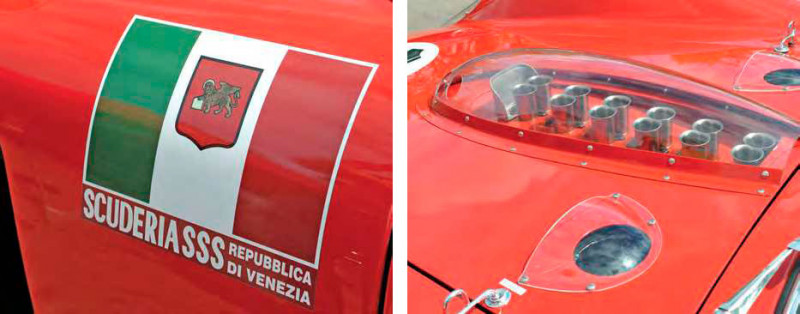
It arrived in the UK in October 1972, by which time it was owned by Martin Johnson. He initiated a partial restoration before fielding it in historics for John Harper and Kim Mather. Harper was a frontrunner prior to getting tangled up in an accident at Brands Hatch in 1976. The Breadvan was then dispatched to Robert ‘Bob’ Smith’s RS Panels concern where a new nose was fashioned; one that was still dissimilar to the Neri & Bonacini original, and close to the configuration from when the car was imported into the UK. Thankfully, however, it did away with the chrome ring around the grille cavity which it had picked up along the way. Johnson sold the Breadvan in 1982, the car heading back across the Atlantic Ocean. What happened next is open to conjecture, not least at what point the car’s engine was substituted.
Fast-forward in the narrative and the car found a wonderful custodian in Monte Shalett during the late 1980s and beyond. The Breadvan also became an unlikely show car, appearing in a special class for what you might euphemistically call ‘unusual-bodied’ Ferraris at the 1990 Pebble Beach Concours d’Elegance (the prize was won by the ex-Enrico Wax 1957 410 Superamerica). In 1997, this perennial globetrotter also made its first appearance at a British motorsport event in a quarter of a century, the Breadvan being driven by Shalett during the 1997 Goodwood Festival of Speed. Moving on, the Breadvan returned to Europe in 2006 after it was acquired by Klaus Werner who fielded the car extensively. He also reinstated the original style of nose along the way. In 2014, ownership passed to Martin Halusa, a historics convert who has since raced the car with brio, as have his preternaturally quick sons, Lukas and Niklas. Their exploits at Goodwood, in particular – often accompanied by five-time Le Mans winner Emanuele Pirro – have maintained the Breadvan’s outsized reputation as a crowd-pleaser. Ironically, this outlaw in marque lore is arguably the most famous Ferrari racer of them all.
IN THE HOT SEAT
Lukas Halusa regularly campaigns this amazing car in all sorts of historic racing events, at which he’s proved incredibly successful, alongside his brother Niklas and father Martin. We asked him what it’s like to drive and race the Breadvan. “I'm lucky enough that I pretty much started my racing career in this special car, and it has really shaped the way I race. I’m just so grateful to be driving it. It’s got so much power with so little weight that you can spin up the wheels quite easily through the corners, so you quickly learn that sliding is not the fastest technique. You have to manage your inputs on each corner.
“It’s very forgiving. When it slides, it's progressive – you can turn on the throttle if you want to. If you want to slow down by turning on the nose, you can do. It’s like it’s telling you how you should drive it. When we bought it, it was maybe a little bit neglected in terms of its race set-up. It really understeered a lot, which was not bad for me learning how to race, but as I got more confident, we dialled that understeer out. We are still always optimising our set-up here and there but we're very happy with it. The one thing you have to be careful with is the gearbox. You have to be very sensitive and sympathetic, and take your time changing gears.
“As it’s so low to the ground and punchy through the air, it's really fast in a straight line. We also own a 250 GT SWB Competizione and it’s very obvious the differences in weight and aero make. It’s like night and day – the SWB feels like a gentleman's car in comparison.
“I find the Breadvan very comfortable to drive, even on long races. The driving position is really easy for me, although you can't be much taller than I am or you can’t put a helmet on. When Emanuele Pirro drives, he has to put his head at an angle!
“On the road, it’s fun to drive but not at all comfortable because it’s so loud. Another downside is that heat builds up in the cockpit – it gets really roasting in there, like an oven hot enough to bake bread! Overall, I would say it's my absolute baby. I’m just totally in love with it.
Handling is very forgiving. Low drag and weight boost pace, but it’s extremely loud in the cockpit.
250 GT Breadvan is a regular at Goodwood Revival, where it has seen some great battles


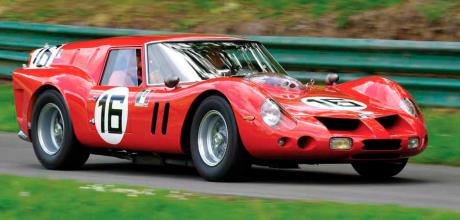
BREADVAN IS TOAST
Thank goodness you photographed the Ferrari 250 GT Breadvan when you did. I’ve just seen footage of the Le Mans Classic race that it took part in, and crashed out of, with devastating consequences. Luckily no one was hurt in the incident but what a shame that such a valuable car with such a unique story should have had such a huge crash. As you seem to suggest in your article, though, this is not the first time the Breadvan has been biffed, and probably won’t be the last. No doubt it will be reinstated to racing condition, ready to be seen at Goodwood and so on in the future.